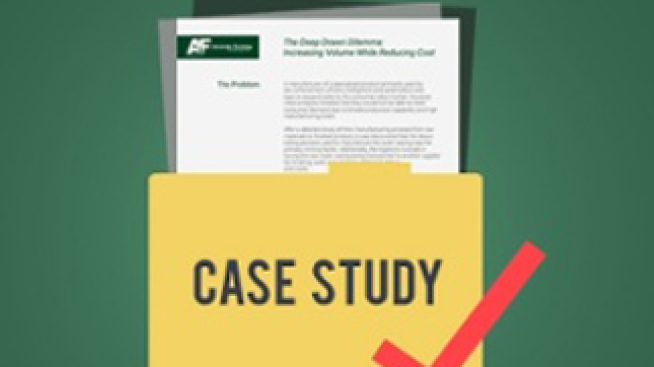—- Deep Draw Fundamentals: Part 3
—- Deep Draw Fundamentals: Part 3
May 9, 2012

As we continue forward in understanding the deep draw process, let’s look at the different stations that we can have in the press and their functions. As mentioned previously, the first station is the blanking station. The blank is pierced out of the metal strip and then forced down to the transfer slide which moves the blank to the next station. The second station is called the cupping station. This is where the blank is first reduced. The reduction of the blank should not be any more than 45% of the blanks diameter which will avoid any tearing of the material. Following the second station or cupping station are a series of deep drawing stations. Depending on the press it is common to have up to 12 to 15 stations to form a finished part.
In order to have varying diameters in a part you would need to use a step draw. This type of draw can also produce different shaped diameters as well. Other common operations in these stations are sidewall shaping, reverse drawing, bulging, curling, threading, and beading, bumping and trimming.

—- Deep Draw Fundamentals: Part 3
—- Deep Draw Fundamentals: Part 3
May 9, 2012

Finding the best deep drawn metal supplier to make your products can be a difficult and time-consuming task.
You need to make sure you’re picking a reliable supplier that offers all of the services and capabilities necessary to ensure your products are of the highest quality.
To help aid you in this we’ve put together a handy worksheet for you to use to compare suppliers, and ultimately decide on the deep drawn metal supplier that best suits your needs.
This worksheet will allow you to make your own decision on the best for you and your company.


